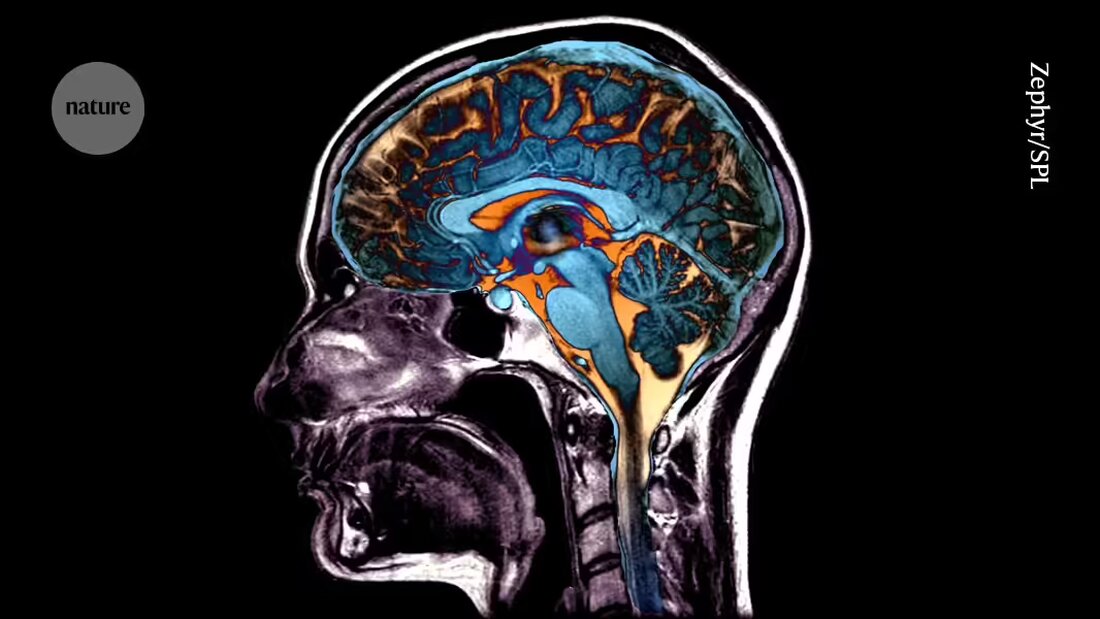Five possibilities of how the brain can age: 50,000 scans show potential damage pattern.
Five possibilities of how the brain can age: 50,000 scans show potential damage pattern.
The analysis of almost 50,000 brain scans has uncovered five different samples of brain atrophy in connection with aging and neurodegenerative diseases. The analysis has also associated the patterns with lifestyle factors such as smoking and alcohol consumption as well as genetic and blood -based markers associated with health and disease risk.
The work is a "methodological masterpiece" that could significantly advance the aging of the aging of researchers, says Andrei Irimia, a gerontologist at the University of Southern California in Los Angeles, who was not involved in the work. "Before this study, we knew that the brain anatomy changes with aging and illness. But our ability to capture this complex interaction was far more modest."
The study was published on August 15 in Nature Medicine
folds in the brain
aging can not only cause gray hair, but also changes in the brain anatomy that are visible on magnetic resonance imaging images, with some areas shrink over time or go through structural changes. However, these transformations are subtle. "The human eye is unable to perceive patterns of systematic brain changes", says Christos Davatzikos, a specialist in biomedical imaging at the University of Pennsylvania in Philadelphia and author of paper.
The previous studies have shown that machine learning can extract the subtle fingerprints of aging from MRI data. However, these studies were often limited and mostly included data from a relatively small number of people.
In order to identify more far -reaching patterns, the Davatzikos team began a study that took about eight years to be completed and published. They used a deep learning method called Surreal Gan, which was developed by first author Zhijian Yang while he was a student in Davatzikos' laboratory. The scientists trained the algorithm with brain mrts of 1,150 healthy people between the ages of 20 and 49 and 8,992 older adults, including many with cognitive restrictions. This contributed to the algorithm to recognize recurring features of aging brains, so that it could create an internal model of anatomical structures that change at the same time, in contrast to those who tend to change independently.
The researchers then applied the resulting model to MRI scans of almost 50,000 people who took part in various studies on aging and neurological health. This analysis provided five discrete patterns of brain atrophy. The scientists linked different types of age -related braingeating with combinations of the five patterns, although there were some differences between people with the same illness.
pattern of aging
For example, dementia and its forerunner, slight cognitive impairment, hadcompounds to three of the five patterns. Interestingly, the researchers also found indications that the patterns they identify could possibly be used in order to uncover the likelihood of further brain degeneration in the future. "If you want to predict the transition from a cognitively normal condition to the slight cognitive impairment, one was most forward -looking," says Davatzikos. "In later stages, the addition of a second [pattern] enriches its prediction, which makes sense because this captures the spread of the pathology." Other patterns were associated with diseases such as Parkinson's and Alzheimer's and a combination of three patterns that were strongly for mortality.
The authors found clear connections between certain patterns of brain atrophy and various physiological and environmental factors, including alcohol consumption and smoking, as well as various genetic and biochemical signatures associated with health. Davatzikos says that these results probably reflect the effects of general physical well -being on neurological health, since damage to other organ systems can have consequences for the brain.
DAVATZIKOS, however, warns that the study "does not mean that everything can be reduced to five numbers" and his team intends to work with data records that include a wider range of neurological diseases and have a greater ethnic and cultural diversity.
-
yang, z. et al. nature med . https://doi.org/10.1038/s41591-024-03144-x (2024).


Kommentare (0)